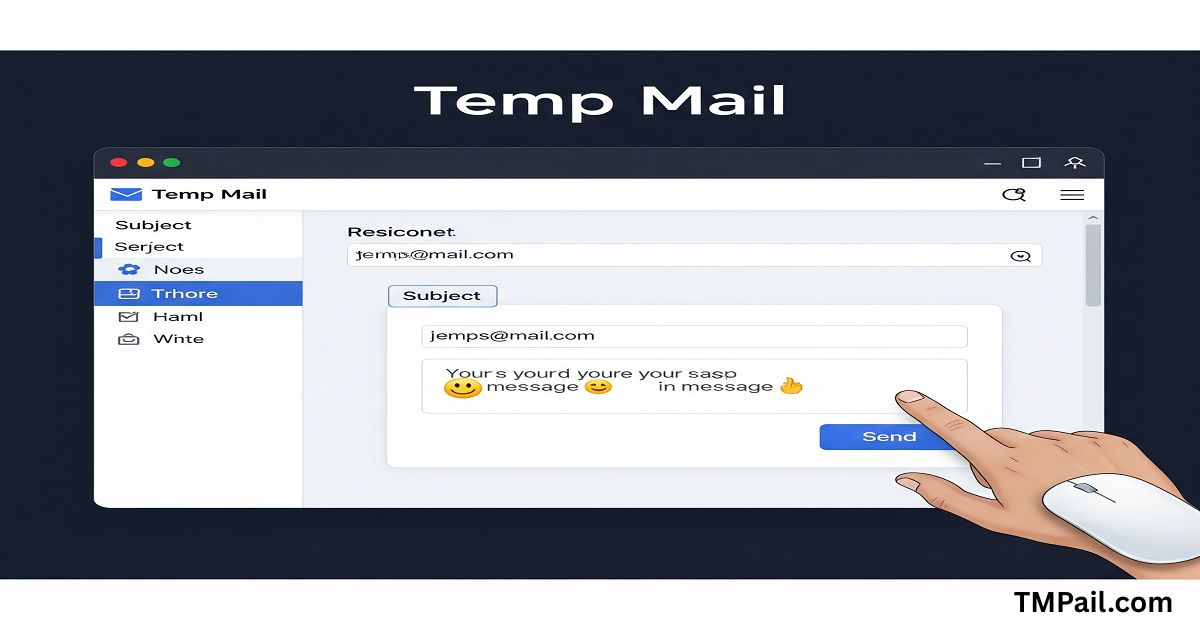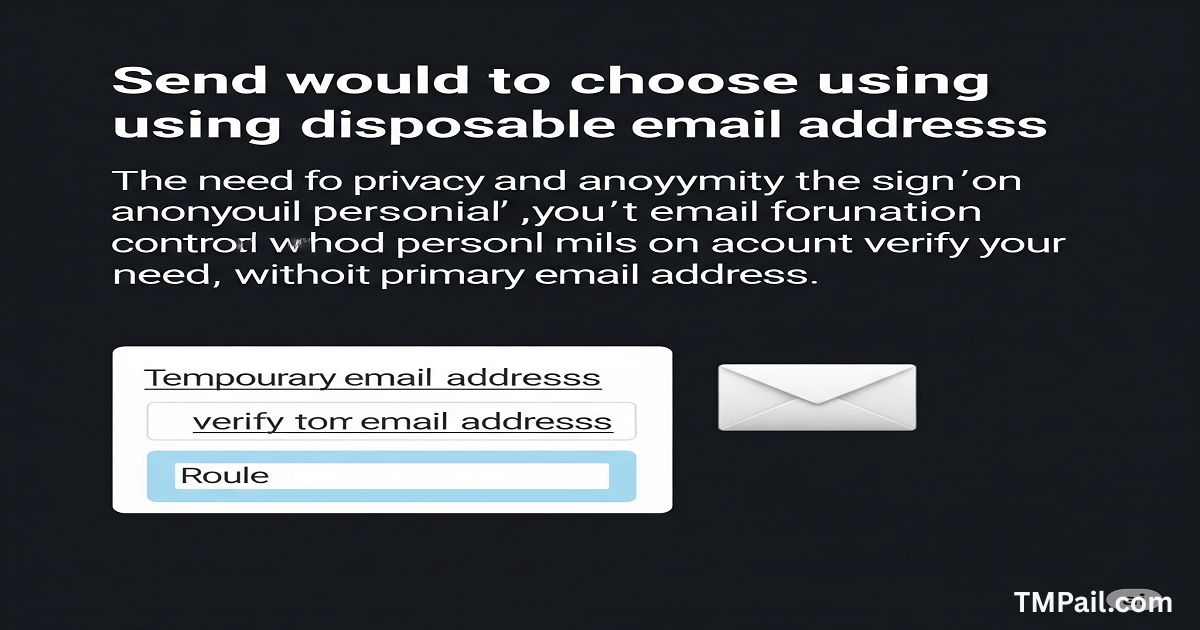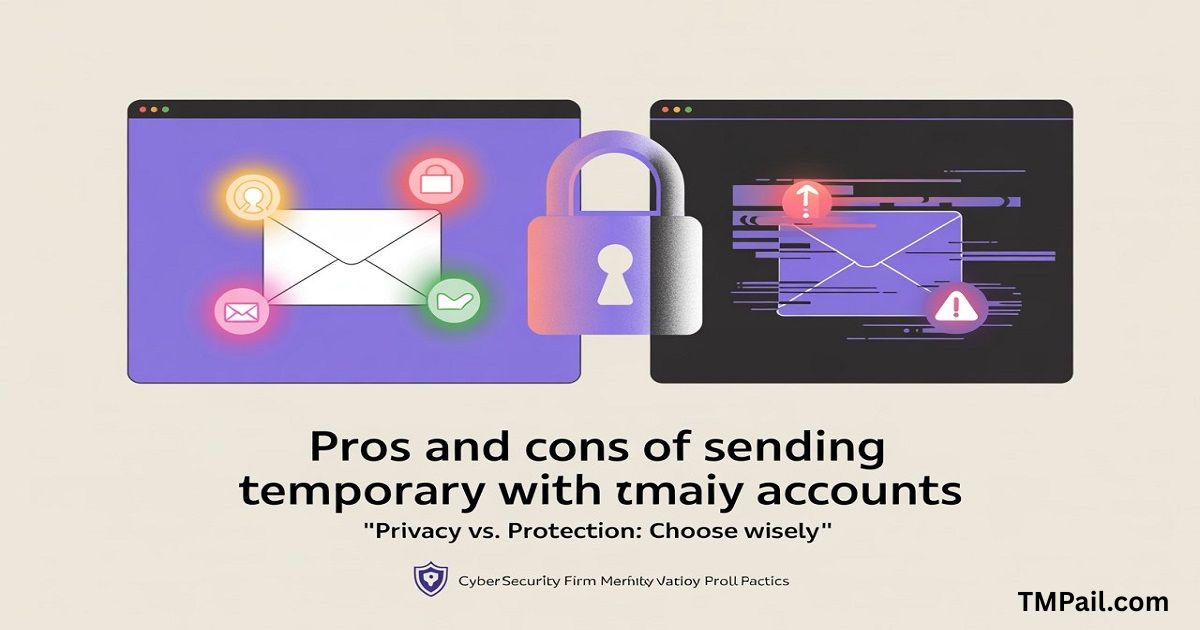

What Is Temp Mail and Can It Be Used to Send Emails?
What Is Temp Mail and Can It Be Used to Send Emails?
In today’s fast-paced digital world, your personal email can easily become a target for spam, ads, or worse—data breaches. That’s why more people around the world are turning to temp mail for sending mail as a fast, private way to access inboxes without exposing their real identity.
A temporary email address lets you skip the sign-up process and avoid sharing your real identity. But here’s the big question: can temp mail send emails, or is it only useful for receiving? In this guide, we’ll explain how temporary email works, explore its capabilities, and uncover whether using a fake email service to send messages is safe, legal, or even possible today. Many people now search for answers around temp mail for sending mail, which is quickly becoming one of the most asked privacy topics in digital communication.
Temporary Email Explained: What It Is and How It Works
Before understanding sending, we need to ask what is temp mail and how does temporary email work? A temp mail is a fake email service that lets you get a temporary inbox without creating an account. It works instantly. You visit a site, get a receive-only email address, and can use it right away. These addresses are mostly random and vanish after a short time, which is why they are called self-destructing email accounts. Some sites delete inboxes after 10 minutes, others after an hour.
The idea is simple. It allows one-time email use. You can read messages sent to it, but many temp mail platforms do not let you reply or send new messages. This makes them useful for short-term email use, like signing up for a trial. They also help avoid spam. That’s why many people see them as a spam-free email option or privacy email tools. It’s a simple, fast way to create an email without sign-up.

Can Temp Mail Be Used for Sending Emails?
Now, let’s answer the real question — can temp mail send emails? The answer is not simple. Most temp email providers are receive-only email addresses. This means they do not allow you to reply or start a new message. The reason is simple: allowing sending could lead to spam and abuse. Still, some services allow it under special conditions. You must look for services that support SMTP or email forwarding.
Some modern temp mail platforms like AnonAddy, SimpleLogin, and Mail.tm do support sending email from temp address. But they don’t call themselves “temp mail” — they are more like email alias tools. These tools protect your main inbox and let you send mail anonymously. So yes, in some cases, does temp mail allow sending? It can — but not all providers support it. You’ll need the right temp mail for sending email system if sending is your goal.
Why Would Someone Want to Send Emails Using Temp Mail?
There are many reasons people explore the use of temp email for sending. In the USA, users often join mailing lists or download PDFs from websites that ask for an email. They don’t want to give out their main address. Some use it to try online tools or sign up on dating or gaming apps. If you want to test a website or reach someone once without giving your real identity, a temp mail for sending mail can help.
It also protects you from future spam. After using a burner email, there's nothing more to worry about. It won’t mess up your inbox. People also use it when applying for jobs on public platforms like Craigslist, where privacy matters. So yes, there are many legit temp email use cases that involve sending, and many now ask: can I use temp mail for sending emails?
Best Temp Mail Services That Allow Sending Emails (If Any)
Not all temp email providers let you send messages. But some do. Here’s a helpful comparison table showing services and what they offer:
| Temp Mail Service | Send Email? | Extra Features | Notes |
|---|---|---|---|
| Guerrilla Mail | Yes | Basic interface, limited SMTP | Good for temporary replies |
| SimpleLogin | Yes | Aliasing, encryption | Not purely temp mail |
| AnonAddy | Yes | Custom domains, forwarding | Ideal for private emailing |
| Mail.tm | Yes | Webmail interface | Acts more like regular mail |
| TMPail.com | No | Fast and simple | Receive-only |
So, if you really need temp mail for sending emails, choose one of the advanced tools like AnonAddy or SimpleLogin. They are secure ways to send anonymous email while keeping your identity safe.
Is It Safe to Send Emails Using Temp Mail?
Many people wonder, is temp mail safe to use? For the most part, yes — but it depends on the service. It’s perfectly okay to use a temp email to receive a verification code from a website. But when sending mail, be careful. Free services may not use encryption. Your message might be seen by others or intercepted.
The safest method is using a provider that offers encryption and access control. That’s why services like ProtonMail or Tutanota exist. For basic tasks, temp mail for sending email is safe. But sending private info from a fake email service is risky. If you must send, use a trusted platform with security in place.
Legal and Ethical Use of Temp Mail for Sending Messages
Is sending email with temp mail legal? In the USA, yes — but only when used right. Sending normal emails for testing, account creation, or short-term use is legal. But using it for spam, fraud, or identity hiding with bad intent is illegal. The U.S. has anti-spam laws like the CAN-SPAM Act that can get you fined if you misuse email.
The legal and ethical use of temp mail for sending emails includes protecting your identity online, avoiding spam, and keeping your main email clean. Using a burner email for phishing or scams? That’s illegal. Always think about why you’re using it. Using tools wisely keeps the internet more secure for everyone.
Temporary Email vs. Anonymous Email: What’s the Difference?
Let’s look at temp mail vs regular email and also how anonymous email account options differ. A temporary email address is created for short use. It disappears fast. You don’t need a password, and you usually can’t reply. An anonymous email account like ProtonMail, on the other hand, is long-term. You register, but the service hides your real info.
So, temp mail for sending mail is quick and easy — like a throwaway. Anonymous email is more secure, encrypted, and useful for long-term private conversations. It’s the difference between a paper plate and a ceramic dish. Both serve a purpose, but one’s built to last.
How to Send an Email Using a Temporary or Anonymous Mail Address [Step-by-Step]
In a world where digital privacy matters more than ever, many users are choosing temporary email addresses to avoid spam, protect personal data, or stay anonymous. Whether you're signing up for a new platform, testing a service, or sending a one-time message, a temp mail tool like tmpail.com can help you send emails without revealing your real identity. Follow these simple and secure steps:
- Go to tmpail.com to instantly create a free temporary inbox—no registration needed.
- Copy your newly created temp mail address from the homepage.
- If tmpail.com provides a sending feature or links to SMTP-supported tools, follow the instructions to enable email sending.
- Use the built-in interface (or any connected platform) to compose your message anonymously.
- Enter the recipient’s email, write your subject and message, and click send.
- Wait for confirmation or a reply—tmpail’s inbox will catch incoming messages too.
Once done, simply close the tab. The temp email will expire automatically, leaving no digital footprint.

Pros and Cons of Sending Email with Temporary Accounts
Using a temporary inbox has its good and bad sides. On the plus side, it helps protect your identity, keeps your main inbox clean, and supports one-time email use. You don’t need to sign up, and it’s fast. These are the benefits of using temp mail.
On the downside, not all services support sending. Many are not encrypted. You might lose access after some time. Also, some websites block temp mail domains. So the limitations of temp email services include poor deliverability, lack of security, and no storage. That’s why you must choose the right temp mail for sending email option.
Alternatives to Temp Mail for Secure and Private Emailing
If temp mail for sending emails is not enough, what else can you use? Many people switch to full anonymous email account tools for better control. These include ProtonMail, Tutanota, StartMail, and MailFence. These services give you privacy, encryption, and regular use.
You can also use email alias tools like AnonAddy. They act like temp mail for sending mail but offer sending features and custom domains. These privacy email tools help you email safely without giving away personal info. They’re trusted in the USA and built for serious users.
Temp Mail for Sending Mail: The Smart Way to Stay Private, Fast, and Secure in 2025
If you’re searching for a safe and fast temp mail for sending mail, be sure to choose a provider that allows outbound messages and encryption. Whether for quick replies or testing platforms, temp mail for sending mail gives users a simple solution to stay private while staying productive online.
Final Thoughts
So, can I use temp mail for sending emails? Yes, but only if you’re using the right tools. Not every temp mail for sending email platform supports it, and not all are secure. Use trusted services, stay legal, and always think about your goal. The right setup makes your communication easy, safe, and private.

